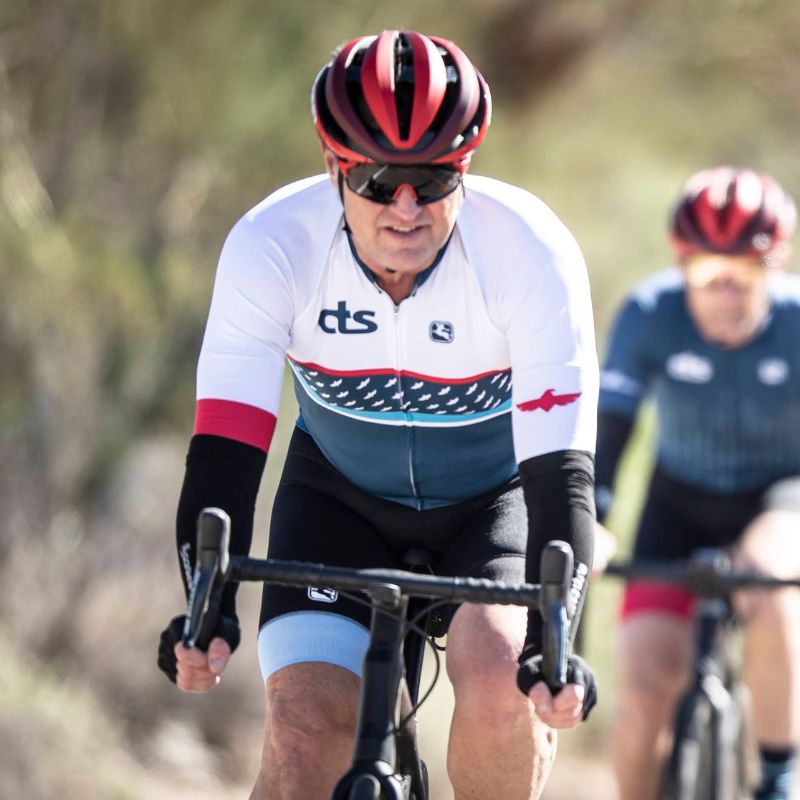
Exercise Equivalents on Food Labels Send the Wrong Messages About Exercise and Calories
By Chris Carmichael,
Founder and Head Coach of CTS
Would knowing how many minutes of walking or running it would take to burn off the calories in a snack influence whether or how much of that snack you eat? The Royal Society for Public Health in the United Kingdom seems to think so. As a coach I think equating food consumed to exercise required a terrible idea.
First, some background. The RSPH first recommended “physical activity calorie equivalent” (PACE) labeling on food nutrition labels in 2016. A recent review study by Amanda Daley, lead researcher from the University of Loughborough, examined 15 studies and concluded PACE labeling may reduce calorie intake compared to other types of food labeling or no labeling at all. Eight of the studies were hypothetical food selection trials, six examined food consumption, and one looked at purchasing behavior.
PACE labeling consistently resulted in lower calorie consumption compared to no labeling, but only outperformed calorie-only labeling (the type you see on most packaged foods in the US) in a few cases. Overall, researchers believe PACE labeling could reduce calorie consumption by about 200 calories per day. That may not seem like much, but other research suggests that even a 100 calorie-per-day decrease could prevent a significant number of people from developing obesity.
The premise behind PACE labeling is that activity equivalents express food calories in way people can relate to, as illustrated in this handout from RSPH. When you tell someone a medium mocha latte contains 290 calories, it’s just a number. When you tell someone it takes 53 minutes of walking to burn an equivalent amount of energy, it puts the calories in perspective. And that may be true.
While I believe we should investigate a wide range of ideas for helping people change their eating habits and prevent obesity, using exercise equivalents to convince people to eat less is a terrible idea for a number of reasons.
Exercise is more than energy expenditure
Doctors, government agencies, and magazines need to stop perpetuating the idea that the primary reason to exercise is to offset the calories you consume. I realize the reality of the situation is that just moving – even a little bit – would be dramatic improvement for millions of sedentary people. But exercise equivalents on nutrition labels aren’t designed to encourage people to exercise more. They are trying to encourage people to eat less by presenting exercise as the negative consequence of eating too much.
We should be promoting exercise because improved fitness leads to improved health, greater longevity, reduced chronic disease risk; and because it burns calories. When people exercise with the intention of improving fitness, they work hard enough to improve cardiorespiratory fitness and create the cellular machinery that enables them to utilize more oxygen per minute to liberate more energy from stored food calories (i.e. glycogen and fat stores). Which sounds more rewarding: walking as a penance for eating a donut, or walking as a means to live longer, do more, and stay out of the doctor’s office?
Exercise equivalents reinforce disordered eating
Millions of men and women suffer from disordered eating, and equating food consumed with exercise required is one of the factors that lead to a harmful relationship with food. For people who already restrict calories and over-exercise, these labels reinforce the idea that eating – any eating – must be counterbalanced by exercising. For people who already struggle with guilt or shame about their food choices, lifestyle choices, or body image, these labels may amplify those negative feelings.
Exercise equivalents say nothing about food choices
PACE labeling focuses entirely on energy consumed vs. energy expended, but doesn’t take into account the nutritional value of the energy consumed. A medium mocha latte from Starbucks, for instance, has 35 grams of sugar, 15 grams of fat, and 13 grams of protein. At 360 calories, it’s more than the 290-calorie example in the RSPH guide, and would require 65 minutes of walking to burn off. There are much more nutrient-dense ways to consume 360 calories, and virtually all dietitians agree people should consume more whole foods, fewer processed foods, and less refined sugar. PACE labeling doesn’t help people make smarter food choices, it only aims to motivate them to eat less of whatever they choose.
► Free Cycling Training Assessment Quiz
Take our free 2-minute quiz to discover how effective your training is and get recommendations for how you can improve.
Exercise equivalent labeling sets a vulnerable population up for failure
Athletes tend to understand the idea that you need to fuel high-volume and/or high-intensity exercise with adequate energy intake. Yet, even that doesn’t mean athletes always make good choices about fueling, as evidenced in part by the prevalence of both caloric overcompensation (increasing intake disproportionate to exercise expenditure) and relative energy deficiency syndrome (RED-S) in both male and female athletes.
PACE labeling isn’t aimed at athletes. It is aimed at sedentary population with a poor understanding of calories, as a preventative measure against obesity. Perpetuating a transactional relationship between energy consumption and expenditure doesn’t help this population. That 360-calorie mocha latte takes 10 minutes to consume but would potentially carry a label that recommends 65 minutes of walking to “pay for” those calories. For someone who doesn’t exercise, that’s a huge barrier to even getting started.
The numbers grow so quickly they soon become meaningless. You can’t out-exercise poor dietary choices for a number of reasons, one of which is that the time scales are completely incompatible. You can consume 1500 calories in a matter of minutes, and using the ratio from RSPH (5.47 calories/minute) the exercise recommendation would be more than four and half hours of walking.
I think the intent behind PACE labeling is a good one. We have a huge problem with obesity, and PACE labeling aims to reduce calorie intake enough to make a real difference, and 200 calories per day makes a difference. But it paints exercise as a tax on consumption rather than a positive path to fitness and health. It perpetuates ideas about exercise and food that do more harm than good for vulnerable populations. As an advocate for the benefits of exercise, I think PACE labeling presents a misleading and potentially detrimental view of the role of exercise in weight management and overall health.
► FREE Mini-Course: Learn How to Maximize Your Limited Training Time
Learn step-by-step how to overcome limited training time and get faster. Walk away with a personalized plan to increase your performance.
"*" indicates required fields


Comments 6
Dear Coach Carmichael,
After 35 years of practicing Primary Care Internal Medicine in CT and FL, I agree with both you and the RSPH. I have come to the harsh realization that our American government is totally neglectful of the over 30-year OBESITY PANDEMIC. Tens of thousands of American die prematurely due to ORDs (Obesity Related Diseases).
Where oh where is the NIH, CDC, Surgeon General!!! Cat got their tongues? OR, are they suppressed by the BIG MONEY? (Insurance and Pharmaceutical Industries). There is a total lack of any EDUCATION. The overwhelming majority of my patients have NO IDEA of what it takes to exercise off the calories they take in. IF they did, as you and I do, they might stand a CHANCE of making better food choices and of avoiding ORDs and premature morbidity and DEATH. ORDs benefit the RICH and punish the POOR.
In an ideal world I would agree.
However the current way of displaying food labels is more suited for a scientific textbook and not fit for purpose.
A useful saying in this context is “don’t let pursuit of the best be the enemy of the good”.
Having a simple indicator that people can quickly understand would be a great improvement and this is a step in the right direction.
I agree. From an overall health perspective, you cannot out exercise poor dietary choices. Factoring in only the calories in/calories out equation is a disservice. It’s the exact opposite of mindful eating. Thanks for your perspective.
I disagree. I started cycling as a way of keeping fit after my knees would no longer take the strain of football. To start with cycling felt like a necessary evil (“negative consequence of eating”) but the more I did it the more I loved it. 13 years later and now I cycle 6 days a week and look forward to every ride.
My point, you are never going to fall in love with exercise until you start to do it. This labeling could start some people on that journey. Of course it won’t work for everyone and no one is suggesting that it should replace dietary education but it is worth a go.
Better education in our schools about nutrition beyond the basic food groups would be more impactful than food labels. Establishing healthy dietary habits based on knowledge at an early age would be something that has a high potential to carry through a person’s life. Wouldn’t it be great if this was part of core programs at our schools and state testing?
Excellent article, and very timely with the holidays coming up. Do a group ride on Zwift for example, and all you hear is people talk about “burning what they ate” or “earning a cake”, etc.